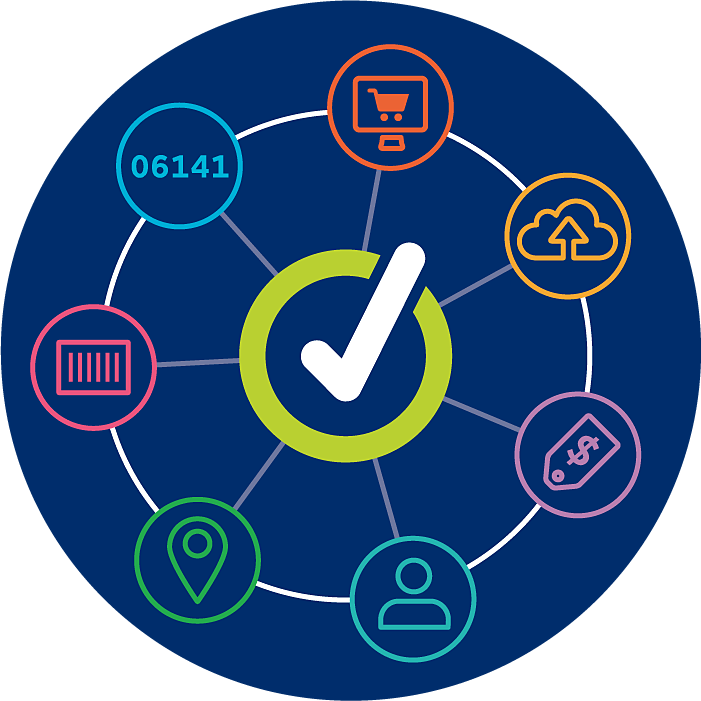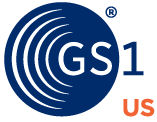Barcodes are an essential part of moving your business forward. Whether you’re an international enterprise tracking a package from a supply warehouse in China to its destination in Florida, a mom-and-pop shop improving efficiency at your point-of-sale, or you're just starting to offer your products online, you need barcodes for whatever it is you sell. You can create a barcode for your products with help from GS1 US.
GS1 standards are the most widely-used standards in global supply chains and GS1 US provides the resources and support to power barcodes used by companies around the globe. You can be confident your barcodes will be functional represent your product, regardless of the market in which you sell your product. Continue reading to learn more about barcodes and how we can help you make a barcode for your products.
What is a Barcode?
A 1D, linear barcode, like a Universal Product Code (UPC), is a series of vertical lines and spaces representing a series of numbers known as a Global Trade Item Number (GTIN). 2D barcodes, like QR Code or GS1 DataMatrix, use a grid pattern to represent GTIN and other information important to businesses, consumers, patients, and more. These codes streamline and reduce errors in systems that require the transmission of both small and large amounts of information. Learn about GTINs
Systems scanning the UPC or other barcodes, decode the bar pattern and use that data to access information in a database attached to the code. With this information, system can take fast, automatic actions to keep supply chains moving. Industries like retail, healthcare, logistics, and many others rely on barcodes to ensure essential data is read quickly and effectively to lead to large amounts of information stored in systems – all with a simple scan.
The process is the same across every industry for companies and organizations to retrieve information quickly and easily without error. Whether using barcodes to track shipments, ensure proper patient care, or quickly check the prices of items, you need barcodes to ensure speed and accuracy. Your unique barcode will allow workers to easily access product information at any point of the supply chain without risk of errors or duplication.

Why GS1 for Barcodes?
When items go through an international supply chain, they’re subjected to tracking in many countries. For example, when an item is made in Japan, its components and raw materials are imported from another country. The Japanese factories then complete the build and export it to wherever it’s sold. Because of this process, the items are traveling through multiple countries and channels. You can more easily track materials and components with effective barcodes that are registered internationally. While you can easily find an online barcode generator to create a code, it’s essential that the information held in your barcode is structured correctly and contains standardized data so it can be tracked through your international supply chain. They can then be accepted in stores and online marketplaces all over the world.
A GS1 barcode can be used internationally and promises a unique sequence for your GTIN or other GS1 identifier that can flow seamlessly through a supply chain from start to finish without getting caught with duplicate information in databases. GS1 Standards ensure that your barcode can be used anywhere you want to market your product.
Already Have a Barcode? Use GS1 US Data Hub to Generate a UPC-A Barcode Image
Use GS1 US Data Hub® to generate barcodes and ensure that your data is easily identified, properly formatted, and shared through a single platform. Whether creating UPCs or other barcodes, you can do it in Data Hub.
 Before creating your barcodes, first ensure you have an authentic GS1 barcode, prefix and/or GTIN
Before creating your barcodes, first ensure you have an authentic GS1 barcode, prefix and/or GTIN

How to Create a Barcode Using Data Hub
Now that we’ve gone through some of the ins and outs of what barcodes are used for and why you need them, let’s walk through how to create a barcode. GS1 US makes it easy to register your identifiers and generate your barcodes, so you always know where to find the data attached to them.
If you have not yet licensed a GS1 Company Prefix for your product or products, start here to license your prefix. When you visit GS1 US Data Hub®, you will first need to enter product data and assign an available GTIN before you can download the barcode image. Visit GS1 US Data Hub® at dh.gs1us.org, then click “Product,” then “Add New Product”:
- Enter Product Data:
Follow the steps on the screen. Start by entering basic product information such as:Product Description: Provide a functional description that is for retailers, and not for consumers.
Brand Name: Enter the name of the product line that is used with consumers.
Industry: This helps retailers and other Data Hub subscribers filter by industry when searching for products.
- Assign a GTIN:
After you click Save and Continue, you can click Let Us Assign Your GTIN. Not sure how GTINs are used? Learn more about GTINs here. You have the option to enter other product attributes, such as Net Contents. When your product is ready to share with the marketplace, click Set Status to In Use.
- Download the Barcode:
Click View Barcode to generate the UPC-A barcode image. Then click Preview Barcode and Download. You’ll receive a PNG file of the barcode.
You can make a barcode to track your products from their point of origin to the customer’s hand with help from GS1 US. Check out the GS1 US Data Hub Help Center for more information on generating a barcode. Visit our Small Business section to learn more about how to track your products on shelves and online marketplaces. Or, contact us to request more information about how GS1 US can help you grow your business.

